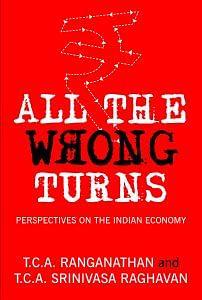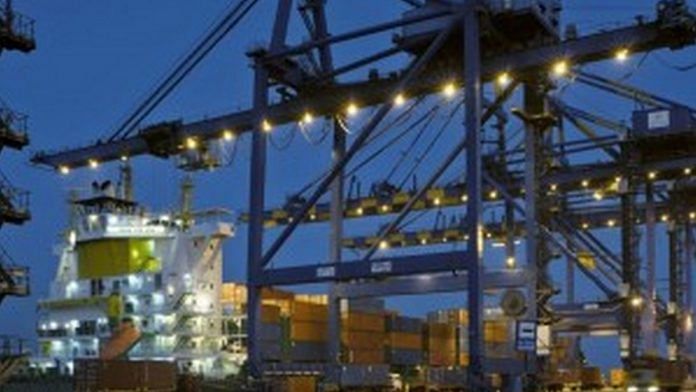We had discussed the rise of South Korea and Taiwan earlier. While the Chinese story is well talked about, most of the discussion is regarding the achievements of the last two decades when it showed astonishing growth. In the early Nineties, it was not significantly different from India. Even in 2005, it had a GDP of a little over $2 trillion which was then a little more than double of the Indian level. India reached the $2 trillion mark by 2014 by which time their GDP crossed $10.4 trillion.
Currently, even the most optimistic of future scenarios by die-hard optimists do not visualise India replicating that type of growth. It is often also said and believed that this achievement is because it is a dictatorship and thus a fair comparison with a democratic India cannot be made. What is thus casually overlooked are the structural changes that China sought to focus upon in order to attain modernity. These we submit had little to do with dictatorship. India too, in the early Plan years had a similar focus but subsequently lost track because of its overwhelming focus on securing and establishing IPR/IDR laws, rules etc.
We depict the China story by going back to a period a little prior to the start of the miracle, to the late 1970s when Deng Xiaoping, as part of his re-issuance of the ‘Four Modernisations’, launched the Chinese SEZ programme.
The Chinese SEZs (four were initially set up) did not get formed in a closed enclave but in what would become open megacities. Shenzhen was an SEZ spread over 2,000 square kilometres, while Hainan spread over 34,000 square kilometres. The first move was to create and build new city structures and then build large industrial areas around it. These were not an immediate success and thus encountered severe criticism about corruption and wastage of public money, but took off by the end Eighties and early Nineties. The selection of the initial centres was based on ‘the most likely to succeed’ criterion i.e. proximity to Hong Kong (their window to the world) and coastal proximity.
In contrast, the first Indian Special Economic Zone (SEZ) had come up in the mid-1960s: the Kandla SEZ. There was undoubtedly a port to which this SEZ was attached but no thought had then been given to the possibility of developing a modern city alongside. It was designed and even now continues to be a somewhat closed enclave for export-oriented production.
In India, SEZs are identified with tax and exchange control relaxations. But the Chinese SEZs were basically areas exempted from the application of various domestic laws, rules and procedures by giving each SEZ chief, usually a senior trusted party leader, wide discretion to adapt international best practices. These best practices would, incidentally, include but not be confined to, tax and exchange control regulations. It may be mentioned here that this approach had also experienced internal political and bureaucratic resistance there, but Deng had not allowed the criticism to prevail. Once these SEZs got going, by the mid to late Nineties, special high-tech zones were set up within a selected section of the mega complexes to give a boost to domestic research and development and technology-oriented production. In between, to attract investment from Taiwan and other places, separate dedicated centres were set up to attract niche interest.
Economic growth was thus initially secured in China in these selected provinces along with an intent to make it overflow and spill over across the remaining part of the country in ever increasing numbers and sizes of ‘concentric circles’ much like the ripples in a pond. Alongside, throughout the entire period very strong state focus on education and health systems continued.
Once the initial SEZs got going, new zones were opened in other parts of the country. A bit later the ‘National Tourist and Holiday Resorts’ were set up to exploit rich tourist resources and boost domestic tourism. The national laws and procedures prevalent in the residual non SEZ areas were modified and realigned only after the SEZ testing experiences gave satisfactory results. The distinct differences from the current Indian practices but also their resemblance to the creation of ‘Marshallian’ industrial districts is thus quite striking.
One of the often forgotten ‘elephants in the room’ is that the USA, the UK and Europe had largely been urbanised by the mid-twentieth century. The Chinese leadership, Deng Xiaoping in particular, recognised that they first needed to create the building blocks of modernity. In India, as we discussed in our manufacturing essay, the Indian authorities, post the initial efforts of the 1950s got way too engrossed with trying to manage ‘market minutiae’ and these lessons from the experiences of other countries went unnoticed.
Also read: What would happen to the world if China becomes the next US
Subsequently, in the post-liberalisation period, when in one interpretation the state had liberalised ‘matters economic’ and thus could and should have focused elsewhere to solve governance issues, the glamour of the economic ministries still prevailed. Undoubtedly, the state did promote SEZs and industrial areas but with a distinct Indian flavour and the overwhelming importance of the chef remained intact. This allowed the Indian uniqueness to continue.
This excerpt from All The Wrong Turns: Perspectives On The Indian Economy by T.C.A Ranganathan and T.C.A Srinivasa Raghavan has been published with permission from Westland Publications.




India is doomed and the Indian SEZs are doomed.dindooohindoo
• The pathetic state of the exports from the SEZ is assessed by the number of non-operative units and the poor capacity utilisation of the SEZ units – information about which is in public and national interest
• The lack of planning of the GOI is highlighted by the fact that the GOI has done no benchmarking of the operations of the SEZ per se, and the SEZ units within – for each sector with comparable peers,in India or the global competition
• If a sector, say X,exists in a SEZ in a specific maritime geography and its global export hub,is in Country A, and the GOI has not been benchmarking the operating parameters of the Indian SEZ and the SEZ units of that sector (X),every 3 years – then the SEZ units in sector X,in India,will definitely cease to exist,or be in a state of terminal decline or exist at the mercy of competitors
• With the miserable performance of the Indian Rupee,and its impact of reduction in Dollarised Rupee costs payable to the SEZ authority by the SEZ units – why are the exports from the SEZs still a failure? In addition, in several sectors, the rupee costs paid by the SEZ units to the SEZ Authority,are not the determinant for operating and financial viability of the SEZ units
• In essence,the GOI has utterly failed to provide a level playing field to Indian exporters,in terms of admin costs,operating cost neutrality,financing costs,effective logistics costs and fiscal red tape and procedures
• The centres of manufacturing excellence near SEZs (For CMT/Job work/Material and Labour sourcing) are not cost effective – as there is no synergy between the SEZ and the Industrial planning and policy
• The strategy of the GOI is highlighted by the fact that the GOI has engaged no 3rd party to analyse the inefficiency of the operating parameters of SEZs and the SEZ units within the SEZ – for each sector within it , with comparable peers in India,and the global competition
• What planning and strategy will the GOI do,if it has no formal analysis of the specific operating costs,parameters,management and other issues,which explain the dismal state of the SEZ units by sector,scale and management quality
• The dismal state of the GOI planning is that it has not properly planned the sector profile of the units in each SEZ, to ensure that the right sectors are in the appropriate geography,in the right SEZ,to minimise the net logistics costs on the EXIM chain, and minimise the inward material logistics costs – considering the future dislocations in inward and external material sources and options of transhipment and alternative export markets
• Several SEZs elsewhere invest limited equity in SEZ units and common service providers,like banks,facilities,hotels,accounting firms etc,as a demonstration of their stake in the SEZ and their strategic inputs in the planning and operation of the same – which is then used to lower the lease charges – which is completely absent in India
• All of the above is to be seen in light of the fact that the SEZ has no data of the financial or operating performance of the SEZ units,loss making units or even the financial and operating performance of the Developers of the SEZ – and is naturally not concerned with the losses or the financial performance of the SEZ units therein
• The peculiar pattern of CMT and Job workers of key sectors such as Gold and Diamond jewellers,with multiple movement of stocks at different processors o/s the SEZ – is not the norm for Gems and Jewellery SEZs or SEZ units – and represents an abnormal industrial agglomeration with a planned and structural dislocation in manufacturing and processing operations – which cannot be solely for the purposes of manufacturing and commercial efficiency.
• Information on raids and prosecutions is critical especially in sectors with high import duties (on merit mode) for inputs,customised finished goods (wherein DRI/Customs cannot assess over invoicing),frequent movements to and from 3rd party processors (which makes the case for wastages and losses in SION and disappearing materials), materials where the EXIM transit time is a few hours and the logistics costs are less than 1per cent of CIF/FOB rates, inputs and outputs with marked differences in rates of different grades of items and offgrades,warehousing artificial losses,amortisable costs ,bad debts and write offs in select SEZs (to be used for 3rd party exports or mergers to obviate tax on SEZ profits),items where the SEZ units are well aware of the sampling and test checks of the DRI and Customs at the SEZ for the inputs and outputs etc.
• The Gems and Jewellery industry is run by cartels from a particular community spread from Western India to North America,EU,East Asia,West Asia and Africa and is a well coordinated money laundering and smuggling operation from the state of rough diamonds and raw gold,to the marketing of jewellery and warehousing of processed and raw diamonds,the banking chain,raters and the chain of associate and front companies – which is all the more insidious,as all the data with DRI/ED/Customs/Interpol used by the Indian State for surveillance all originated from the overseas counterparts and partners of the Indian traders located in India (who are in many cases – in spirit the same de facto entity owners)
• The premise that Indians are the least cost labour source for the jewellery sector and their informal working style (w/o documentation,using informal labour and in slum style conditions) is an innovative marvel of Indian genius,is a pathetic deception,and the entire array of fiscal and monetary sops for this sector (including SEZ) allows the sector to generate financial buffers via money laundering,tax arbitrage,treasury operations, merchanting exports, accomodation financing ,cash financing, alternative fund transfers,FX speculation,leveraging double and layered financing, defrauding Indian Merchant exporters such as STC and MMTC,Credit insurance fraud etc. which provide the sector a pricing edge in overseas markets ( via illegal,nefarious and fraudulent means)
A VERY important contributor to the success of the chinese SEZs, the dual currency system and the easy availability of funds at USD rates of interest for exporters has been missed in your article